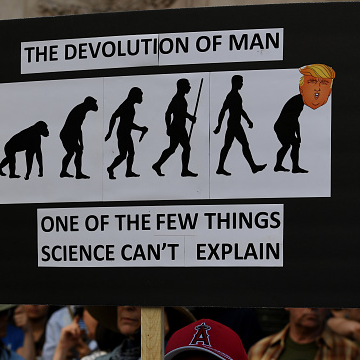100 days into Trump’s presidency: Jobs first, environment last
🔗 [SYSTEM UPDATE] Link found. Timestamp incremented on 2025-11-26 13:55:13.Saturday marked 100 days in office for US President Donald Trump. GENEVIEVE THORPE looks at how his comprehensive anti-environment agenda has played out in that time.

http://gty.im/672492160
President Trump has been in office for 100 days, and his anti-environment agenda is in full swing. Here, surrounded by miners, he signs he Energy Independence Executive Order last month at the EPA offices.
By GENEVIEVE THORPE
Saturday marked 100 days in office for US President Donald Trump, as well as 100 days of his anti-environment agenda.
Already President Trump has demonstrated that environmental issues are not at the top of his priorities, using executive orders to completely transform the nation’s environmental policies.
Throughout his election campaign, the President made it clear that he wanted to bring back jobs in fossil fuel industries and that he believes climate change is a “hoax”.
However, the speed at which President Trump has begun work on his anti-environmental agenda has alarmed many, including scientists who last weekend marched in protests in nearly 500 cities around the world.

Climate change
Just five days into his presidency, President Trump appointed ex-Oklahoma attorney general and fellow climate change denier Scott Pruitt head of the Environmental Protection Agency (EPA).
Soon after, it was leaked that Mr Trump had imposed a freeze on all EPA grants, contracts and social media activity concerned with climate change, and had the intention of cutting $2.6 billion of the agency’s funding.
Mr Trump has also voiced his intentions to defund nation-wide climate change adaptation programs. White House budget director Mick Mulvaney said these programs, which prepare communities for the impacts of climate change, are a “waste of your money”.
The Paris Agreement
The United States, under the Obama administration, was one of 185 countries to sign the Paris Agreement in 2015, which committed the country to make its “best efforts” to reduce greenhouse emissions by 28 per cent by 2025.
At the time, Barack Obama acknowledged America had a responsibility to tackle climate change as the second-largest emitter of greenhouse gases. His administration began investing heavily in renewable energy, spending $39 billion a year to fund green energy.
But even with Mr Obama’s investment in green energy, there were doubts that the 28 per cent reduction in emissions was realistic.
There is also the growing possibility that the US will withdraw from the agreement altogether, a decision forecast to be made by the end of May.
http://gty.im/671606798
An anti-Trump sign at the science march in Los Angeles.
Fossil fuels
Mr Trump’s focus on job creation and cutting regulation, particularly in the fossil fuel industry, earned him millions of supporters over the election campaign.
This is despite unemployment rates being at their lowest since May 2007 at 4.5 per cent.
In a recent press conference, President Trump said he wanted to dismantle many environmental regulations that he believes are “unnecessary and … job killing” in order to “[put] power back in the hands of the people”.
He recently signed an executive order to lift a ban imposed by the Obama administration under the Clean Power Plan in 2013.
This will allow excavation of coal and fossil fuel in the mid-West, despite industry leaders, environmentalists and policy-makers warning that coal jobs are not coming back.
http://gty.im/644249912
Protects continue over President Trump's plan to restart work on the Dakota access pipeline.
Dakota access pipeline
Mr Trump has also signed an executive order to recommence the construction of the Dakota access pipeline – a request previously rejected by Mr Obama in 2015.
The pipeline will be an underground system to transport crude oil through four states, from the Bakken Formation to Pakota in Illinois.
This has created concerns about water contamination as large volumes of oil will be run underneath North Dakota’s Lake Oahe, a major source of drinking water.
It will also run through the native land of the local Standing Rock Sioux, a tribe of about 10,000 people. Concern is growing for the possible harm to sacred cultural lands and tribal burial grounds, of which there are few remaining in America today.
This has sparked demonstrations by activists, showing their solidarity and attempting to reaffirm the rights of the Native Americans.

Pesticides
In 2016, the EPA announced the insecticide Chlorpyrifos, which is used by many farms across America, poses a risk to humans, even in small amounts.
Studies conducted by the EPA showed the chemical can disrupt brain function, just as it does to bugs in the process of killing them.
Under the Obama administration, the EPA eventually recommended a ban on the agricultural use of the insecticide, scheduled to take effect on March 31 this year.
But when the day arrived, Mr Pruitt blocked the recommendation and deemed the chemical safe for agricultural use, despite the EPA’s concerns.





